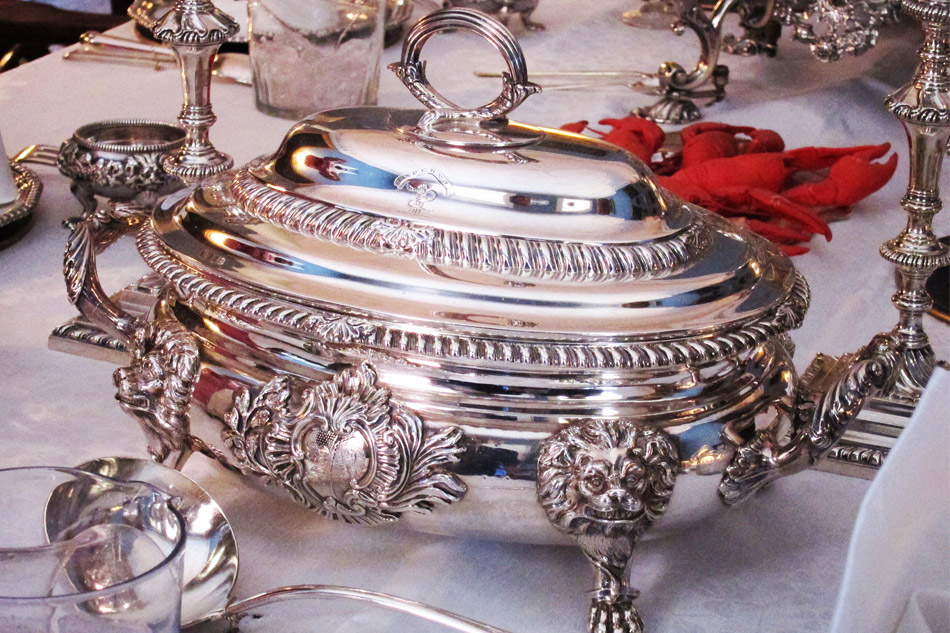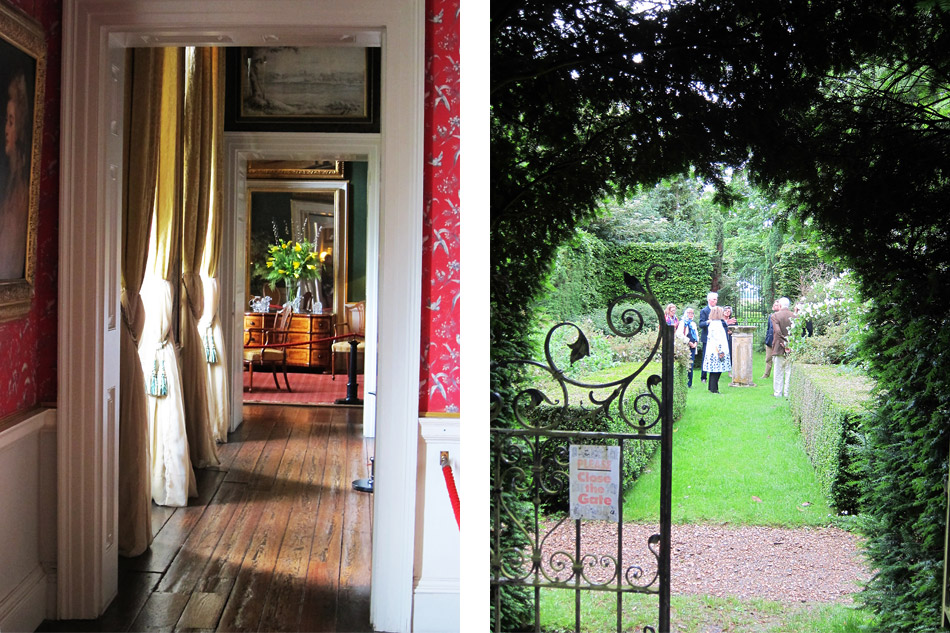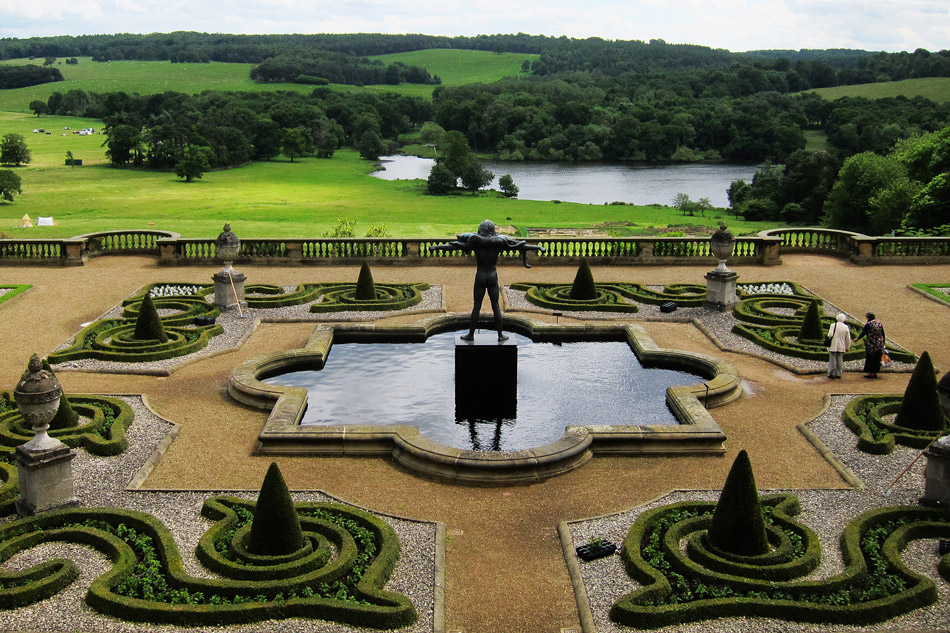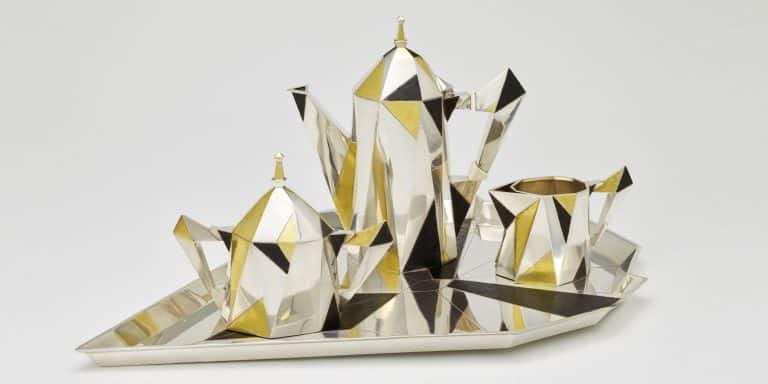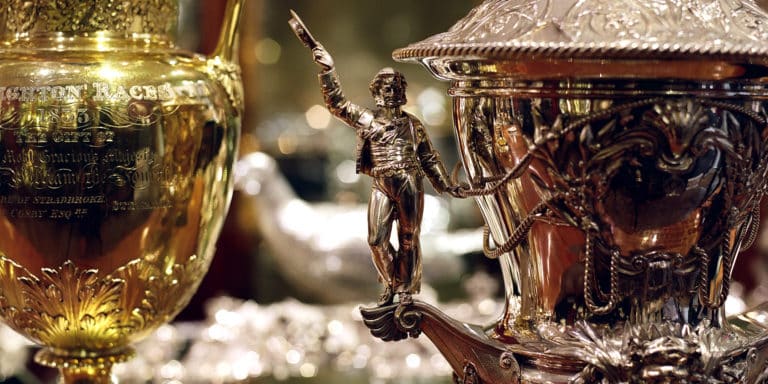
January 2013Lady Justice holds the Scales of Justice and the sword of Reason, balancing truth and justice on the stage of this silver tempietto, which features the coat of arms of the City of York. The elaborate piece is still used as a table decoration at Mansion House, home of the Lord Mayor of York.
Silver is known as the “Queen of metals.” Its appeal is universal, and has been for thousands of years, as the material has been fashioned into everything from royal chalices to communion cups, teapots to coins. It’s beautiful to behold, satisfying to handle and rich with intricate hints about its makers, owners and the era in which it was created — if you know how to decipher the clues. Perhaps the British silver experts John Culme and John G. Strang described its allure best in their book Antique Silver and Silver Collecting (Hamlyn): “In its finest forms, silver almost lives. Like velvet, or polished wood, it invites touch, sight and thought.”
I am certainly not a collector, but ever since I inherited some fine antique silver from my British father, I have been captivated by it. So last June I spent a week in Yorkshire, England, with five serious connoisseurs, attending a “master class” arranged by the charming British silver expert and former Christie’s vice president Christopher Hartop and his equally knowledgeable wife, Juliet Nusser, another silver expert from Christie’s. The Hartops organize a few plush international study tours for silver aficionados every year; in 2013, they’ll lead trips to France (March), England (May) and Argentina (November). The excursions include curator-led tours of museums with important silver holdings, visits to famous gardens and meals at locally renowned restaurants. But the cardinal draw is the access to private collectors’ homes, places that otherwise just wouldn’t be accessible. (Visit www.christopherhartop.com to learn more.)

Clockwise from upper left: Hovingham Hall, private home of the Worsley family since 1563, is entered through a grand Palladian-style archway. Christopher Hartop shares his knowledge with tour participant Nardi Hobler, as the author looks on. The group poses on Hovingham’s lawn, with host Sir William Worsley, third from left.
THE MASTER CLASS
“Anyone can go to historic houses,” says Hartop, “but it’s better to meet the owners and see how they cope with their ‘golden shackles.’ Part of the fun is meeting the different personalities.”
Our Yorkshire tour was organized for maximum variety and involved visits to — and several meals at — exquisite family seats such as the charming Hovingham Hall (a magnificent Palladian-style mansion that was the childhood home of the Duchess of Kent), Sledmere House (owned by photographer Christopher Simon Sykes’s brother Sir Tatton, the 8th Baronet) and Farnley Hall (where J.M.W. Turner visited to paint the countryside). We also toured magnificent country houses open to the public, including Castle Howard (of Brideshead Revisited fame) and Harewood House (one of England’s “Treasure Houses,” with 18th-century Robert Adam interiors), and house museums like Temple Newsam and Fairfax House (possibly the finest Georgian townhouse in Yorkshire).
MODES OF COLLECTING
I was the only neophyte in the group, but my delightful international companions shared their expertise generously. Together we experienced the joy of handling “important” silver and perceived firsthand the truth of Judith Banister’s declaration in Collecting Antique Silver (Concorde Books): “The feel of silver is somehow almost as critical as its appearance.” On day one we each received a set of white gloves, which by the end turned gray from constant use.
Along the way, I learned that people collect silver in very different ways. Some collect by style, in categories such as Baroque, Queen Anne, George III or Regency. Others collect by use: Sir Thomas Lipton collected — you guessed it — teapots. A German in our group buys only dome-top inkstands from the 1790s (he has 13). Sportsmen like silver racing trophies; those with smaller budgets gravitate toward beakers and spoons.

Known to millions as Brideshead — after the 1980s television series Brideshead Revisited — Castle Howard was designed in 1700 by a London dramatist, John Vanbrugh, and built by the renowned architect Nicholas Hawksmoor. It features the first masonry dome to crown a private residence in England.
Others collect by maker. For example, Patricia Kluge, the Virginia socialite, only bought works by such English stars as Paul De Lamerie (1688-1751) and Paul Storr (1771-1844), whose pieces cost a fortune in today’s market. Nardi Hobler, a decorative-arts scholar on the trip, collects primarily Philadelphia silver made by her ancestor, D. McMullin (1765-1843). Paul Revere, is, of course, the most sought-after American silversmith, with the work of the beloved patriot still selling for hundreds of thousands of dollars. Interestingly, however, he doesn’t hold the record price at auction for American silver; that honor belongs to Cornelius Kierstede, whose punch bowl sold for $5.9 million at Sotheby’s in 2010.

A giant wine cooler made of bog oak and embellished with silver is one of the sentimental treasures of Castle Howard; it was given to the family in 1841 after the beloved lord of the manor lost his seat in Parliament. A quarter of a million local voters signed a petition 400 feet long, which was put inside it, to make him feel better.
THE HALLMARKS OF SILVER
Armed with a borrowed magnifying loupe, I learned that most antique British sterling-silver pieces have at least four hallmarks. One, the standard mark: the lion passant (a lion walking to the left) signifying a work is 92.5 percent pure sterling; if it’s not there, it is likely silverplate — or not English. Two, the town mark: identifying the location of the assay office that assessed the piece. Three, the date mark: a letter of the alphabet, which can be located on a date chart. And four, the maker’s mark: the initial (or initials) of the silversmith.
YORKSHIRE COUNTY
I began to build this new body of knowledge about 200 miles north of London in Yorkshire, which is Constable country, with rolling hills of lush farmland, rollicking cumulus clouds and, if you’re lucky, clear blue skies. Its unspoiled beauty has long inspired artists like Thomas Gainsborough and writers like the Brontë sisters.
We stayed outside the city of York at the luxurious Middlethorpe Hall and Spa, a stately brick house from the late 1600s now owned by the National Trust. It is decorated with chintz, fine Georgian antiques and 18th-century portraits — and features acres of magnificent gardens. (Fitting since Yorkshire is known as the “Garden of England.”) During the 17th and 18th centuries, exports of wool, lead, coal and timber from Yorkshire’s port of Hull brought the county much wealth, which accounts for the many fine manor houses from that era.

Built in 1699 and now owned by the National Trust, the handsome brick Middlethorpe Hall and Spa — the luxurious hotel outside of York where the group stayed — is furnished with Georgian antiques and good 18th-century portraits.

A fine hot-water jug from the 1750s, decorated with delicate floral tendrils in the manner of Paul De Lamerie, is part of a silver collection in a private house outside York.
SILVER THROUGH THE AGES: 1660 to 1840
Our group focused mostly on English silver made between 1660, when Charles II was restored to the throne — which evidently led to an upsurge in demand for domestic English silver — and 1840, shortly after Queen Victoria came to power. After that point, in the words of Michael Clayton, author of Christie’s Pictorial History of English and American Silver (Phaidon), “Very little in the way of newly invented types of silver for the table made their appearance.” (After a week, I also learned that while most English silver was made in London, there were also centers of silversmithing right in York, as well as in Exeter, Chester and Newcastle.)
From this rich, 180-year period we saw examples of two-handled cups (porringers) with squat bodies embossed and chased with foliage and animals; toilet services; beer tankards with flat-domed lids; wine cups on simple baluster stems; columnar candlesticks with square or hexagonal bases; and ovoid vessels with domed covers, which are commonly known as “ginger jars.”
Around 1675, Chinoiserie decoration became popular and then made another comeback in the 18th century. At Temple Newsam, which now belongs to the City of Leeds, recently retired curator James Lomax returned to show us his triumphant final purchase for the museum: an elaborate late 18th-century Chinoiserie epergne from the collection of Daisy Fellowes, the late American Singer sewing machine heiress.
Tea, coffee and hot chocolate arrived in the mid-17th century, requiring silverwares in which to serve them. The common form was a tall, tapering, cylindrical pot with a spout and handle. Casters were designed in the 17th century to sprinkle sugar, pepper and mustard— though not salt, which had its own container. Many are straight-sided cylinders with domed, pierced covers. The best sets we saw were also at Temple Newsam.
After Louis XIV’s revocation of the Edit of Nantes in 1685, Huguenot craftsman fled to England for safety, with their French stylebooks and exceptional skills. One, Pierre Harache, was even accepted into the Goldsmiths’ Company in England, a rare feat. The Hugenots wielded tremendous influence and are credited with laying the foundation for the supremacy of English silver for a century. (Paul Revere was descended from a Huguenot.) During the reign of Queen Anne (1702-14), Huguenot styles dominated, especially the baluster form. Jugs had graceful shapes, curved spouts and scroll handles. Teapots were often shaped like squat pears, with high-domed covers. Cutout designs were applied to cups, ewers, bowls and teapots, next to finely engraved crests and coats of arms.
When George I came to the throne in 1714, the silver dining service — including plates, dishes, soup tureens, chargers and sauceboats — became all-important. Rococo, with its restless curves and disregard for symmetry, appeared in the 1730s, and the decoration of a piece became almost as important as its silhouette. “Silver then became sculpture on the dining table,” Hartop says.
At Temple Newsam, we saw a spectacular 1735 tea equipage by the famed London silvermaker De Lamerie, which Hartop described as “the Microsoft of its day” on account of its sophisticated workmanship and use of technology.
Styles become even more bombastic during the Regency under Prince Regent, the man who became William IV. (The Regency was 1811–20, but in the decorative arts the Regency style extends to 1837.) At Fairfax House, we saw the famous gilded set of “Grantley salts” made by R. Garrard in 1824, which comprise three sexy, mostly undressed female and three male Nubian figures sitting on shells with elaborate rockwork bases. In a word: fabulous.

Justice trumpets victory on the finial of a table decoration at Mansion House in York.
EDUCATING YOUR EYE
The biggest lesson I learned on our trip is that when it comes to collecting silver, it’s easy to say you insist on good condition, correct marks of identification and proper patination, but that alone is not enough to ensure authenticity and top quality. You need to educate your eye.
Short of trailing Hartop around the world, how does one do this? “Go to museums, go to auction houses, see what the great things look like,” advises Ed Munves of James Robinson, a Manhattan shop that specializes in fine antique English silver and welcomes neophytes — and their many questions. “Otherwise, there is no way to know what you are looking at, what things should look like. Experience determines what you are going to find.”
On a recent visit, he showed me, in short order, how proper silver marks could be taken off a spoon and “let in” to another piece, like a cup. He pointed out how parts from two or more pieces can be combined or “married” to make a single piece. (A hallmarked base, for example, might be married to a later handle, which is not easy to spot.) Damages and repairs can be very skillfully hidden. If the marks are too small, says Munves, they were probably made to deceive. If a lion is facing in the wrong direction, it’s not sterling.
Visit a dealer like Robinson or Shrubsole, also in New York, and you’ll be surprised by how much they love to talk about their passion for silver. Following my week in Yorkshire, I feel well on my way to understanding why.

